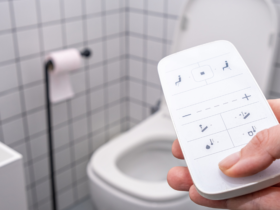Vinyl flooring is a famous choice for many homeowners because of its durability, affordability, and easy to care and maintenance. Installing vinyl flooring can be a DIY project, but it requires some basic installation tools, techniques, and knowledge of the installation process. Here I will provide you with a step-by-step guide on how to install vinyl flooring.
Step 1: Prepare the Surface
First, you need to prepare the surface before installing vinyl flooring. The subfloor must be clean from any dirt and dust particles, dry, and free of any debris or bumps. If necessary, remove the existing flooring and install new underlayment. Make sure to follow the manufacturer’s instructions for the type of underlayment recommended for your vinyl flooring.
Step 2: Acclimate the Flooring
Acclimation is the process of letting the vinyl flooring adjust to the temperature and humidity of the room where it will be installed. This is significant to prevent any expansion or contraction of the vinyl planks or tiles. Leave the vinyl flooring in the room for at least 48 hours before the installation process.
Step 3: Measure and Cut the Flooring
Next, measure the length and width of the room to determine how much vinyl flooring you require or need. Add 10% to the total square footage to account for any mistake or waste. Use a utility knife or vinyl cutter to cut the vinyl planks according to the size of the room. Make sure to leave a ¼ inch gap between the flooring and the walls to allow for expansion.
Step 4: Install the Flooring
Start from one corner of the room and lay the first row of vinyl planks or tiles. Use a tight tapping block and rubber mallet to ensure the planks or tiles are snugly fitted together. Then start to continue laying the flooring in rows, working your way across the room. Use a chalk line or pencil line to keep the rows straight. If necessary, cut the last row of planks or tiles to fit the remaining space.
Step 5: Install the Baseboards and Trims
After the vinyl flooring is established or installed, they install the baseboards and trims to cover the gaps between the flooring and the walls. Use a nail gun or adhesive to secure the baseboards and trims in place.
Step 6: Clean Up
Clean up any dirt, debris, or dust particles from the installation process. Sweep or vacuum the floor to remove any dirt or debris before and after the installation of vinyl flooring.
Conclusion
The installation process of vinyl flooring seems like a very hard and difficult task, but it is a relatively easy and affordable way to update the look of your home. Follow these simple steps, and you’ll have a beautiful new floor in no time.











